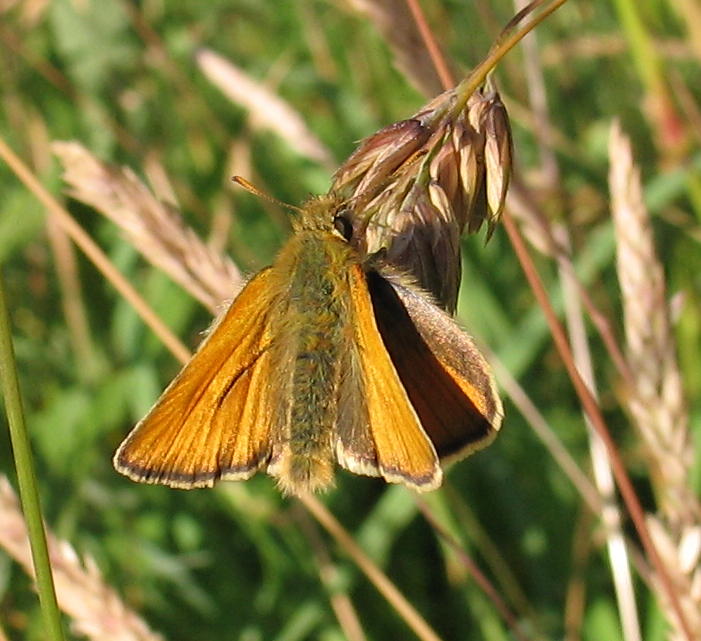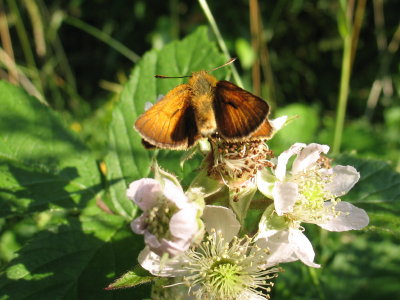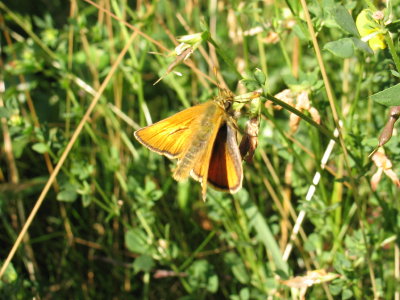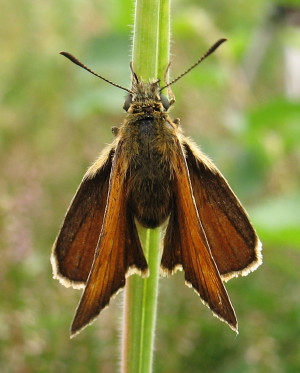Small Skippers are insects of high summer. Although
they spend much of their time basking or resting among vegetation, they
are marvellous flyers, manoeuvring expertly through tall grass stems. It
is these darting flights, wings glinting golden-brown in the sunlight,
that normally alert an observer to their presence. Closer examination will
reveal many more individuals nectaring or basking with their wings held
in the half-open posture distinctive of skipper butterflies.
The butterfly is widespread in southern Britain
and its range has expanded northwards in recent years.
Behaviour and life history
Small Skippers characteristically hold their upper
wings obliquely upwards and away from the under wings when at rest. It
forms discrete colonies with periods of activity being alternated with
extended periods of rest. This species tends to confine its activities
within the immediate neighbourhood of its colonies and seldom wanders any
distance away. Eggs are laid in late July and early August with the caterpillars
emerging some two weeks later. Small Skippers overwinter as caterpillars
in grass sheaths before emerging in the following spring, feeding and finally
pupating in a silken tent amongst blades of grass in June. Adults emerge
in late June or early July. The larval foodplant is almost exclusively
Yorkshire Fog, Holcus lanatus.
Where to look for it
The Small Skipper if a butterfly of rough grassland,
field margins, hedgerows, woodland margins, rides and glades. It is commonly
found in all Plymouths Local Nature Reserves, particularly where there
is rough grassland.
Distribution and status
Common and widespread throughout Plymouth wherever
there is suitable habitat.
Similar species
The characteristic resting pose with the angled
forewings make this species separable from all others except the Large
Skipper, Ochlodes venata, which is rather larger and has a more patterned
upper surfaces to the wings.





